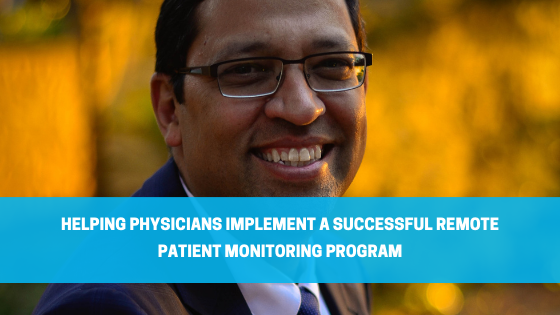Remote Patient Monitoring (RPM) is on track to be the future of healthcare, especially as the number of chronic care patients and the cost of healthcare increases annually. RPM is the use of technology to gather patient health data from an individual. The information is electronically evaluated by a clinic or nurse call center. RPM is starting to gain traction by many in the medical field because it improves patient care. Many of these devices are able to capture data that is not necessarily observed by the patient. These regular readings give meaningful data that can help providers see the ‘bigger picture’ when it comes to a patient’s condition and outcome.
This technology, usually in the form of a device which can go home with a patient, can monitor important health factors such as blood pressure, blood sugar, and respiratory rate. It allows doctors and clinicians to regularly check patient vitals before a patient even presents a symptom that would require an office visit.
Here at TriageLogic, we help you monitor patient data and ensure patient safety. After the patient is sent home with their device, we regularly monitor all health information from the device. Non-clinical staff make sure that the patient device is being used properly and call patients back if the data is not coming in as expected. Our nurses review patient data and contact patients if they see this concerning data. Nurses ask patients questions to determine if physician intervention is needed. They also provide additional information or ask questions based on individualized physician instructions. Our non-clinical and clinical staff are a bridge from patient to doctor and they alleviate the burden on the providers.
In the United States, 6 in 10 adults in the United States suffer from some form of a chronic disease, such as obesity, diabetes, or heart disease. Chronic diseases are responsible for 75% of the 3.5 trillion dollars spent on healthcare each year. Overall, it’s estimated that widespread adoption of remote patient monitoring could save the U.S. as much as $6 billion annually.
For doctors and medical organizations, this translates into improved patient care while at the same time giving providers the ability to increase their annual revenue per patient. First, the regular monitoring of patient vitals provides efficient scheduling of follow up visits when necessary based on abnormal readings. Second, CMS reimburses doctors for the cost of the RPM device and for the time it takes to monitor patient vitals. The reimbursement amount allows doctors to earn extra income on a monthly basis even after considering the costs of outsourcing the monitoring to TriageLogic.
TriageLogic believes RPM is on the forefront of healthcare. With the ability to closely monitor chronic patients in a safe, cost-effective manner, RPM is one of the fastest growing medical technologies in the medical field. Our goal is to help both patients and physicians by providing tools to improve care while decreasing the burden on physicians. This is why we have built the best infrastructure on the market to support RPM for physicians, healthcare facilities, and hospitals.
For more information, please contact: Ravi.raheja@triagelogic.com





